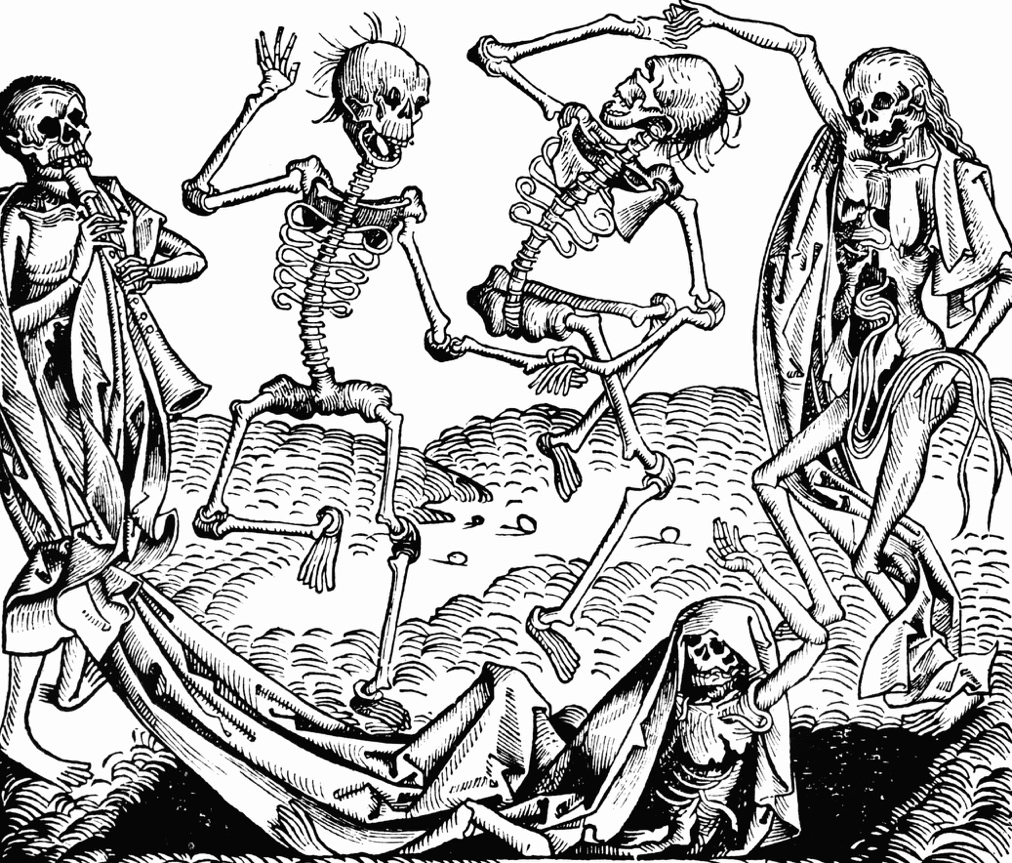The world has seen pandemics and health crises before and each time the Church has been impacted. No surprise really as the Church has maintained a role in people’s lives throughout the centuries. What follows below is a piece written by Cleve Callison concerning the Church’s response during the Black Death that swept through Europe in the 14th century. During this time the Church responded in some creative ways. The Church was, however, confronted with ridicule perhaps inviting it over the coming centuries to re-engage with its teachings. My thanks to Cleve for submitting this work.
THE BLACK DEATH (or Great Plague) was the most devastating pandemic in human history, causing the death of between 30 and 60 per cent of Europe’s population between 1347 and 1351. The Plague caused religious, social and economic upheavals that profoundly affected the course of European history. It produced charlatans and villains along with compassionate clergy — and one village’s incredible sacrifice.
The Black Death probably originated along the Silk Road, most likely carried by fleas on the black rats of merchant ships from Genoa. It spread throughout the Mediterranean, and to the rest of Europe through Italy. Renewed religious fervor and fanaticism bloomed in its wake. The Dance of Death, or Danse Macabre, an allegory on the universality of death, was a common painting motif in the late medieval period.
Some Europeans attacked friars, foreigners, beggars, pilgrims, lepers, and Romani, blaming them for introducing the disease. By 1351, 60 major and 150 smaller Jewish communities had been destroyed. Many Jews relocated to Poland, finding protection under King Casimir the Great.
With less competition, survivors of the plague found food cheaper and lands more abundant. Many inherited property from their dead relatives, and this undoubtedly helped destabilize the millennia-old system of feudalism.
FOR THE RELIGIOUS COMMUNITY, faith in the Church as an institution was shaken. The public demanded an explanation for the plague, and while there was a sense it might be punishment for sin, there seemed to be no rhyme or reason to it. Cloistered communities were the perfect breeding ground for plague, with whole monasteries and abbeys being wiped out. It seemed the Church had no answers, but many local priests did all they could to give their parishioners spiritual solace as they faced their deaths.
Mortality for priests was probably higher than for the general population. Clergy caring for the sick died at a high rate. Because so many were ill, and so few priests remained, Pope Clement VI declared that the dying could make their confession to anyone present – “even to a woman”, said an English bishop – and that it would still lead to salvation. This was clearly major change for the Church. (It did not last). Clement even granted remission of sin to all who died of the plague because so many were unattended by priests.
The Church’s reputation never quite recovered from the Black Death. One authority believes that hastily-consecrated new priests were not as well trained as their predecessors. Socially, it became more acceptable to malign the clergy in the years that followed. In his epic Canterbury Tales near the end of the 14th century, Geoffrey Chaucer portrays the religious figures of the Summoner and the Pardoner in very unflattering ways (though sparing the kindly parish Parson).
THE PLAGUE DID NOT DISAPPEAR in the 14th century. Sporadic outbreaks occurred even up until the early 20th century. In 1665, the tailor in the small Darbyshire village of Eyam received some flea-infested cloth from London. Within a week people in the household began dying. Alarmed villagers turned to their rector, the Reverend William Mompesson, and Puritan minister Thomas Stanley. The clergymen introduced precautions to slow the illness, including burials and church services in a location where villagers could separate themselves. Today we would call this “social distancing”.
The Plague in Eyam lasted 14 months. Its behavior was mystifying. Elizabeth Hancock was uninfected despite burying six children and her husband in eight days. The village gravedigger also survived, despite handling many infected bodies. Church records show 273 names of the dead, but the actual figure out of a population of 800 may have been as many as 430.
Perhaps the villagers’ most extraordinary decision was to quarantine themselves — the entire village — to prevent further spread of the disease. It was a heroic decision that no doubt caused many to lose their lives but spared neighboring villages. Plague Sunday has been commemorated in Eyam every year since 1866.
Sources:
“Black Death”, Wikipedia; “Eyam”, Wikipedia;
Danièle Cybulskie, “Priests and the Black Death”
(https://www.medievalists.net/2015/02/priests-black-death/)

